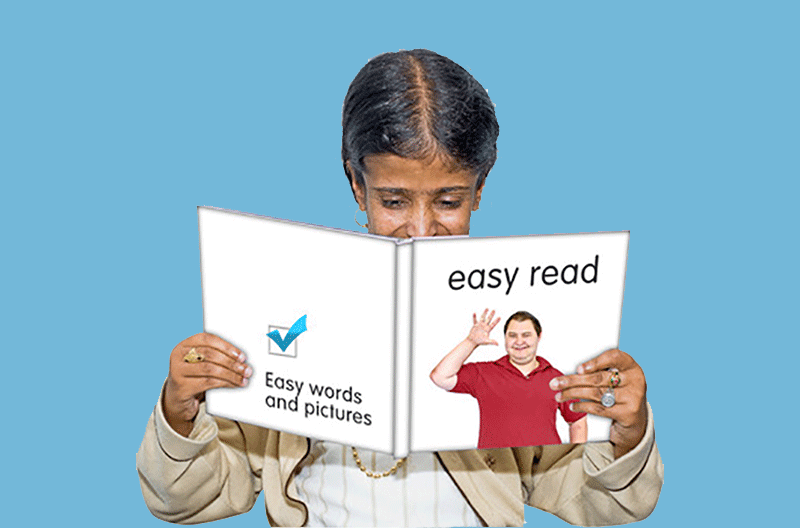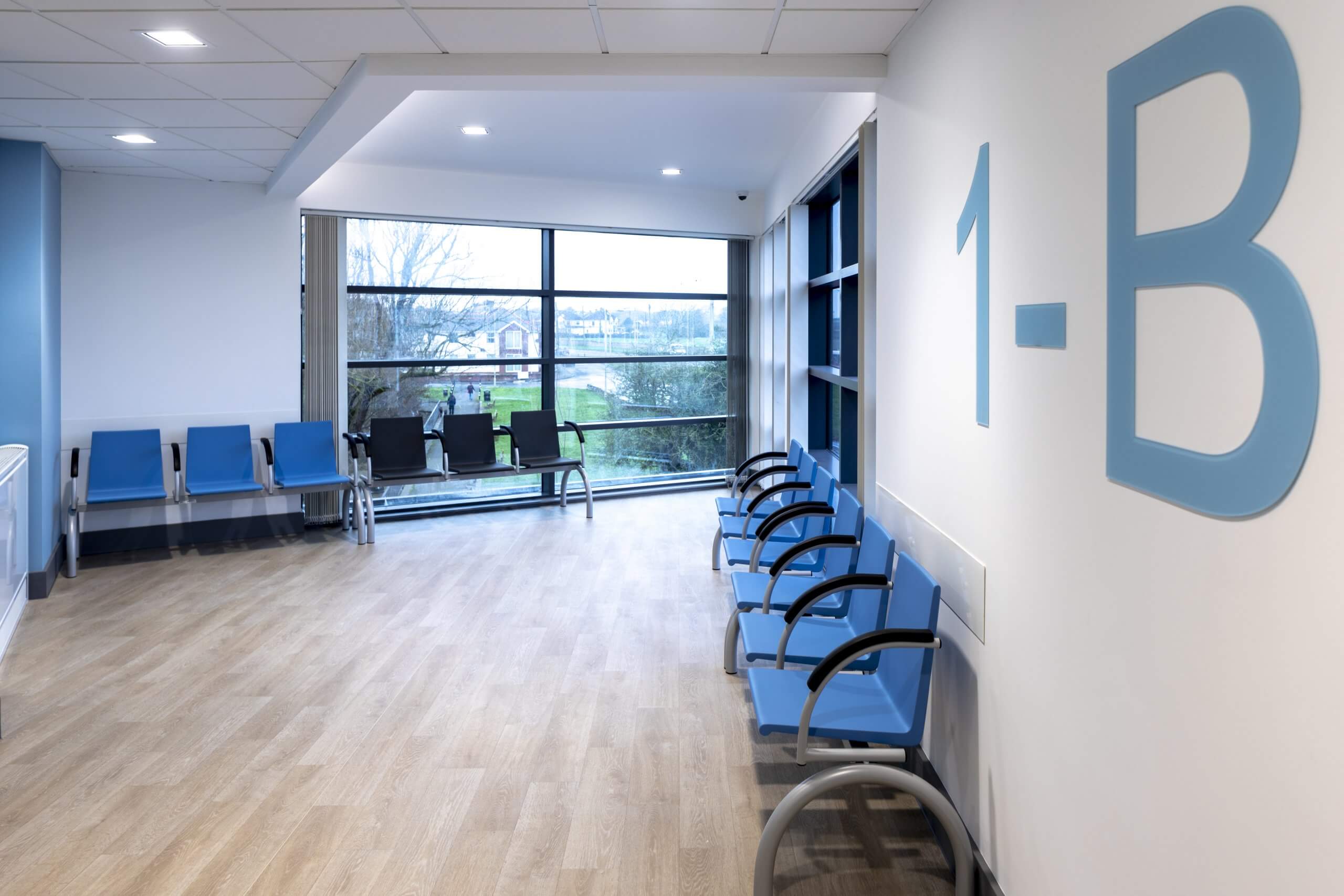More details about making reasonable adjustments
The Equality Act 2010 creates a duty to make reasonable adjustments so that people who have a disability are not disadvantaged. They are small changes that can make a big difference to someone’s experience.
Reasonable adjustments can be very bespoke and unique to the person, so it is important to have a conversation with the person and record the adjustments that work for them.
Watch this video from The Misfits Theatre Company to find out more about reasonable adjustments in healthcare.
There are also some adjustments from which most people who have a learning disability and autism would benefit…
Accessible information
Making information more accessible can be as simple as using images to show what the words are explaining and making the font bigger and colours clear with a contrast that’s easy on the eye.
Here are some more ways of making communication more accessible:
Easy Read
Easy read is a way of writing documents that makes them easier to understand. Easy read normally follows these rules:
- Short sentences written in plain English.
- Pictures alongside the words to help explain things.
- Explanations of any long, difficult words or words that aren’t used very often.
- Larger font size and a clear font type.
Click the button at the top of the page to see this webpage in an easy read format
Social stories
Social stories are a way of preparing for a journey step by step. They break the journey down using key activities and times, such as leaving the house at 1pm and getting on the bus when it arrives at around 1:15pm.
They have pictures to help visualise what to expect and explain where things might not go exactly to plan (such as the bus being late).
There are pictures of dates and clocks, and it is best to use photos of places that the journey involves, especially if they are travelling somewhere unfamiliar.
Personalise our free Welcome to your GP practice social story template and make it available to your patients
Tips and advice
We all appreciate some tips and advice when going somewhere or experiencing something unfamiliar. If you practice has a particular way of working then give your patients advice and information on this in advance, it is particularly important to give them information about who to ask for help.
Download our free resource: Tips to help me at the doctors
Decor and the environment
For your disabled, neurodivergent patients and patients with a learning disability there are many obstacles to overcome at a GP surgery. Even the clinical setting can be overwhelming and may cause sensory overload. There are some small changes you can make to the environment:
- Turn some of the lights off.
- Provide a separate waiting room.
- Remove bright and garish posters and decor.
- Put some plants in the waiting room and open window blinds.
- Put up signage to areas such as reception, the exit, lifts and toilets.
- Turn off the TV, radio or patient call system if this is particularly noisy.
- Make sure there is enough space for someone using a walking aid, wheelchair or mobility scooter.
- Make sure the disabled toilet is clear of clutter, the emergency cord is hanging appropriately and it’s ready to use.
- Make sure weighing scales and other equipment is clear to see and someone is available to help guide the patient through what to do.
These are just a few small steps you can take to help put your patients at ease. We have worked with building management company Assura to develop a research report and toolkit which is available for you to use.
Our report identifies and advises on 4 key themes…
1. Independence, choice and control
Healthcare buildings must not increase an individual’s dependence on others. Just 22% of disabled patients feel independent in health centre environments.
2. Dignity
Less than half of respondents felt toilet facilities in primary care met people’s needs and Changing Places facilities were highlighted as an important adjustment, where possible.
3. Feeling relaxed
Décor, lighting, noise levels and waiting room layout were all highlighted as factors that affect how people feel when visiting their healthcare building.
Almost half of those who support people to go said they felt stressed and 55% think the person they support felt stressed.
4. Customer service and patient care
Environmental stressors are made worse when patient care isn’t supportive or respectful.
Respondents told Dimensions that the skills, knowledge, training and attitude of people working in primary care is important.
The impact of Covid-19
The global pandemic has seen healthcare provisions change overnight, proving that adjustments can be made quickly.
While some could remain permanent after the pandemic, they must be appropriate for everyone.
Respondents to the survey told Dimensions that in-person appointments are still very important and, while virtual consultations work for some people, they’re not well-suited for annual health checks or for people who do not communicate with words.
Adjustments to appointments
Booking an appointment and making sure you’re there on time can be difficult for many people, if someone is anxious about going to their appointment or require support to go this is even more difficult.
If possible, make some slots each day available for patients who have a learning disability or are neurodivergent and make these appointments longer than average. This will give them chance to call later in the morning or book even further in advance. This is particularly important because some people might need longer to prepare for their appointment and to get the plans in place to accommodate attending.

Being in unfamiliar surroundings with unfamiliar people caused Paul great anxiety, but it's important he goes to his local surgery. To help prepare, staff booked a taxi for Paul to and from the surgery every Friday. To put him at ease, Paul’s support staff prepare a flask of tea, a couple of biscuits and his favourite mug. At first, the staff at the surgery arranged things so Paul could sit down and have his tea and biscuits straight away. After six weeks they began to guide him into the consultation room.
Sometimes you might find that your patient cannot make it to their appointment, or needs to get used to attending the practice before transitioning into the GP or nurse’s office.
If you can work with all staff in the surgery to accommodate this it will not only make your patient more relaxed and open to discussing their health concerns, but also gives their support team time to prepare any information or Health Action Plans you can use.
Ask, listen and share
Your patients and their circle of support are the experts. Ask them what the practice can do to best support them and listen to their suggestions. They will request things we haven’t covered here and the changes you make for that patient will help other patients too.
It can feel daunting thinking about the wealth of reasonable adjustments you can make, but remember you don’t need to make them all at once and all at the same time. They are based on your patients’ needs and thinking flexibly will help you accommodate everybody when they need it.
It’s also important to share your work; this doesn’t just mean telling patients what you’re doing (or have the capacity and resources to do when they need it) but telling other practices and healthcare providers and facilities too. You can learn from each other and when patients are transferred the reasonable adjustments should be made throughout their whole experience.











